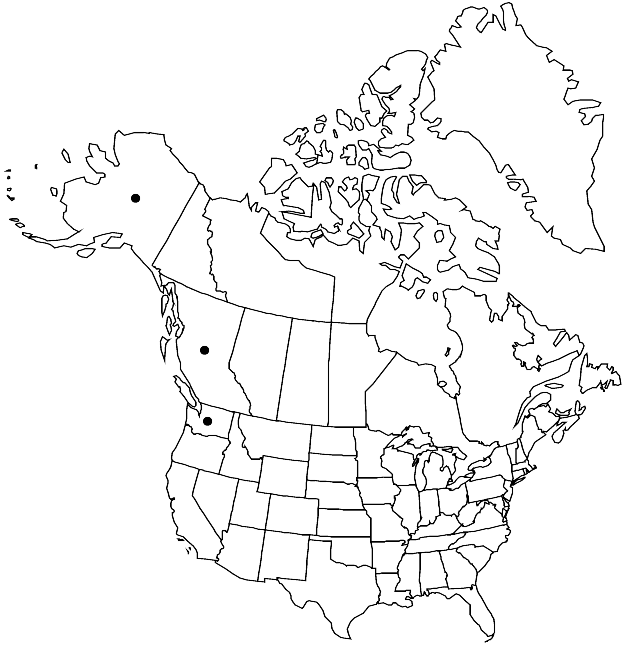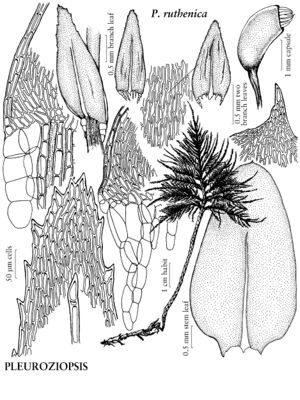Difference between revisions of "Pleuroziopsis ruthenica"
Bryologist 9: 39. 1906.
imported>Volume Importer |
imported>Volume Importer |
||
| Line 58: | Line 58: | ||
|publication year=1906 | |publication year=1906 | ||
|special status=Illustrated | |special status=Illustrated | ||
| − | |source xml=https:// | + | |source xml=https://bitbucket.org/aafc-mbb/fna-data-curation/src/2e0870ddd59836b60bcf96646a41e87ea5a5943a/coarse_grained_fna_xml/V28/V28_798.xml |
|genus=Pleuroziopsis | |genus=Pleuroziopsis | ||
|species=Pleuroziopsis ruthenica | |species=Pleuroziopsis ruthenica | ||
Latest revision as of 21:38, 5 November 2020
Plants light green, frondose-dendroid. Stems with primary stems stoloniferous, branches 1.5–3 cm, attenuate, branchlets 4–7 mm, attenuate; lamellae apical cells round, elliptic, square, or rectangular. Stem leaves clasping, ovate, smooth or wrinkled; base long-decurrent, 1-stratose; apex apiculate or obtuse to acute; medial laminal cells vermicular, 40–81 × 5–7 µm. Proximal branch leaves gradually grading distally into leaves similar to branchlet leaves; median branchlet leaves plicate; base long-decurrent; margins plane or narrowly recurved near base, serrate to entire proximally, irregularly and strongly toothed to serrate distally; apex broadly acute; medial laminal cells 28–45 × 5–7 µm. Sexual condition dioicous; archegonial and antheridial plants similar, perigonial and perichaetial buds on stem near branches; perigonial leaves broadly ovate, acute; perichaetial leaves ovate, apex acute to acuminate. Seta smooth. Capsule red, not contracted below mouth. Calyptra cucullate, covering 1/2 capsule.
Habitat: Humus on ground or logs along creeks and rivers, moist, shaded habitats
Elevation: low to moderate elevations (10-600 m)
Distribution

B.C., Alaska, Wash., e Asia.
Discussion
Pleuroziopsis ruthenica is a distinctive species, somewhat reminiscent of Climacium; both have erect secondary stems arising from a creeping primary stem and occur in wet habitats. Pleuroziopsis is lighter green and more slender in appearance, with a frondose-dendroid habit, an ovoid, arcuate, cernuous capsule with a hypnaceous peristome and exostome teeth with fine cross striolations; Climacium has a coarser dendroid habit and a cylindric, straight, erect capsule with narrow, densely papillose endostome segments. Another important feature distinguishing Pleuroziopsis from Climacium is the nature of branching. In Pleuroziopsis, the plants are erect from a creeping primary stem, as in Climacium, but they are also frondose-dendroid, that is, they are flattened and the secondary and tertiary branches are divided, often several times, so the plants are noticeably frondose. In Climacium, the plants are not flattened; the branches arise around the distal end of the erect secondary stem and seldom, if ever, produce branchlets.
Selected References
None.
